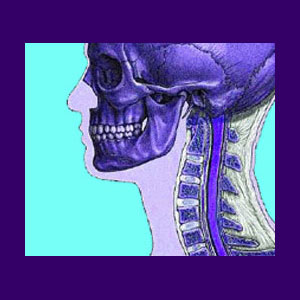
Neck pain diagnosis is where many patients hit a snag in their treatment process. This is because accurate and successful diagnosis of back and neck pain has become a very unsure proposition for most patients. Back and neck pain have become epidemic concerns, much in part to the misdiagnosis of structural issues throughout the spinal column.
In the cervical spine, arthritic changes and disc issues are both par for the course and spinal misalignments and curvature concerns are quite common, making correct diagnostic conclusions unfortunately very scarce indeed. You see, in many instances, pain is mistakenly attributed to incidental structural changes that are not at all pathological.
This discussion focuses on bringing to light the many problems inherent to the diagnostic process for neck pain.
Achieving a Neck Pain Diagnosis
Being diagnosed with any number of structural issues in the neck should not be difficult. Most adults suffer marked arthritis in the spine throughout the middle to lower cervical region. Disc desiccation is virtually universal and expected for all adults to experience in the neck, while bulging discs are incredibly commonplace. Many patients also demonstrate a loss of spinal curvature in the cervical spine and chiropractors are quick to find subluxations in most patients.
These are simply the most common spinal issues located in the neck, but there are of course, many, many more which occur less frequently in patients across the globe.
Neck Pain Diagnosis Concerns
Generally in medicine when a diagnosis is provided, it is good news. It shows that the source of neck pain symptoms has been identified and treatment can now begin in earnest. However, in the real world of the back pain therapy sector, this is rarely the case.
I correspond with patients every day who have received treatment ranging from chiropractic adjustments and pain management pills to physical therapy and even epidural injections, despite the fact that no positive diagnosis has been made. The doctor is simply guessing what may cure the condition (the cause of which typically remains unknown…)
In many other cases, a diagnosis is made right away, but treatment fails time and time again. It is not uncommon for the diagnostic theory to change and evolve as the patient grows more and more frustrated with the horrific curative results. Once again, although many doctors will talk their way out of it, this practice amounts to little more than a guessing game, with the loser always being the victim (who suffers and pays) and the doctor always winning (by getting rich). Remember, doctors always get paid, regardless of the efficacy of their treatments. I wish that I had a job like this.
Diagnosis of Neck Pain
This article is not meant to bash doctors. They are (in most cases) trying their best to help. However, the neck pain treatment statistics offered by most therapy options are truly sad and any caring health professional who works in the dorsopathy industry must also recognize that their efforts are often futile.
The problem is multi-faceted, with diagnostic eclecticism being a big part of the overall equation and the purposeful ignoring of mindbody disorders also figuring into the mix. Is there a solution to this vicious cycle of unenlightened diagnosis followed by illogical and unsuccessful treatment? For all our sakes, I certainly hope so.




